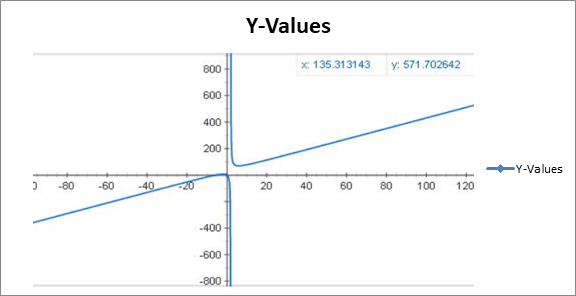
Concept explainers
a.
To show: that the total area A of the page is given by
a.
Answer to Problem 85E
Explanation of Solution
Given information: A page that is x inches wide and y inches high contains 30 square
inches of print. The margins at the top and bottom are 2 inches deep and margins on each side are 1 inch wide.
Formula used:
Area=length
Calculation:
Length of page = y.
Width of the page= x.
Area A=xy ......( 1 ).
Since, margins at the top and bottom are 2 units each. And on edges it is 1 inch wide each and area of printed region is 30 inch square.
Length of printed area=( y -4).
Width of printed area=( x -2).
Area of printed area =30.
Therefore,
Therefore,
b.
To find: the domain of the function based on the physical constraints of the problem.
b.
Answer to Problem 85E
xshould be greater than 2 , Since Area of the page cannot be no-positive.
The domain of the area function is x >2.
Explanation of Solution
Given information: A page that is x inches wide and y inches high contains 30 square
inches of print. The margins at the top and bottom are 2 inches deep and margins on each side are 1 inch wide.
Calculation:
xshould be greater than 2 , Since Area of the page cannot be no-positive.
If x is greater than 2 , is greater than 2 , y will automatically be greater than 4.
The domain of the area function is x >2.
c.
To sketch: a graph of the area function using graphing utility and approximate the page size such that the minimum amount of paper will be used. Verify answer numerically using the table feature of the graphing utility.
c.
Answer to Problem 85E
At around x = 5 thenArea is minimum and is close to 70 square inches.
Explanation of Solution
Given information: A page that is x inches wide and y inches high contains 30 square
inches of print. The margins at the top and bottom are 2 inches deep and margins on each side are 1 inch wide.
Calculation:
The graph of the function

Where x -axis shows width andy -axis shows area of the page.
To find page size for which paper will be minimum is the problem of finding x such that Area is minimum.
At around x = 5 then Area is minimum and is close to 70 square inches.
Chapter 2 Solutions
Precalculus with Limits: A Graphing Approach
 Calculus: Early TranscendentalsCalculusISBN:9781285741550Author:James StewartPublisher:Cengage Learning
Calculus: Early TranscendentalsCalculusISBN:9781285741550Author:James StewartPublisher:Cengage Learning Thomas' Calculus (14th Edition)CalculusISBN:9780134438986Author:Joel R. Hass, Christopher E. Heil, Maurice D. WeirPublisher:PEARSON
Thomas' Calculus (14th Edition)CalculusISBN:9780134438986Author:Joel R. Hass, Christopher E. Heil, Maurice D. WeirPublisher:PEARSON Calculus: Early Transcendentals (3rd Edition)CalculusISBN:9780134763644Author:William L. Briggs, Lyle Cochran, Bernard Gillett, Eric SchulzPublisher:PEARSON
Calculus: Early Transcendentals (3rd Edition)CalculusISBN:9780134763644Author:William L. Briggs, Lyle Cochran, Bernard Gillett, Eric SchulzPublisher:PEARSON Calculus: Early TranscendentalsCalculusISBN:9781319050740Author:Jon Rogawski, Colin Adams, Robert FranzosaPublisher:W. H. Freeman
Calculus: Early TranscendentalsCalculusISBN:9781319050740Author:Jon Rogawski, Colin Adams, Robert FranzosaPublisher:W. H. Freeman
 Calculus: Early Transcendental FunctionsCalculusISBN:9781337552516Author:Ron Larson, Bruce H. EdwardsPublisher:Cengage Learning
Calculus: Early Transcendental FunctionsCalculusISBN:9781337552516Author:Ron Larson, Bruce H. EdwardsPublisher:Cengage Learning





